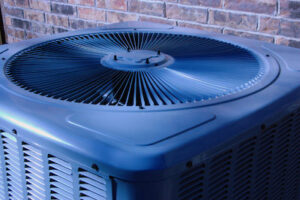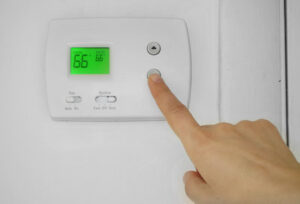What You Should Know About HVAC Systems
I love the feeling of walking into my cool home on a hot summer day or entering a cozy warm business after being out in the cold. And of course, I have the benefits of HVAC systems to thank for this.
What is HVAC and what do you need to know? It is an acronym that stands for Heating, Ventilation, and Air Conditioning. It’s the incredible system that cools or heats your home or place of business. It keeps you comfortable even when it’s scorching hot outside or freezing cold.
For some people who live in areas with harsh climates, it can be a matter of life and death. Imagine being outside in Arizona during August or being outside in Alaska any time of year! Keep reading to learn more about the basics of HVAC systems.
What Are The Basics Of An HVAC System?
 HVAC systems may seem complex but when referring to just the basics, what do you need to know?
HVAC systems may seem complex but when referring to just the basics, what do you need to know?
HVAC systems consist of ductwork, blowers, fans, filters, heat exchangers, flow-control dampers, electrical components, and several different types of controls.
In a forced-air system, an HVAC technician will typically install a furnace as the heating source. In a heat pump system, they use an outdoor unit to do both cooling and heating.
HVAC systems are composed of several components that work together for your comfort. Here is a quick summary of those essential parts:
- A condensing unit that consists of a compressor, coil, and fan.
- An indoor furnace or air handler. The furnace has an electronic ignition system to light the burner and control the blower fan speed.
- Ductwork can be flexible or semi-rigid depending on your preference and should be properly sized for your system.
- A programmable thermostat is a key component of an HVAC system as it allows you to set your desired comfort level and temperature for different times throughout the day, week, or year.
- Sensors to monitor indoor and outdoor temperatures that let your HVAC system know what’s going on so that it can operate at maximum efficiency.
Adding all these components up, you get a complete heating and air conditioning system or HVAC. The components work together to create the perfect climate within your home or business by moving air over a heat exchanger. This heated or cooled air is then distributed throughout your property through your ductwork system.
Different Types Of HVAC Systems
Although they all serve similar functions, there are several different types of HVAC systems.
Forced-Air System
 One of the most common types of HVAC systems is a forced-air system and it’s not hard to see why. Forced-air (ducted) systems consist of ductwork and vents that deliver warm or cool air into your home through registers connected to them.
One of the most common types of HVAC systems is a forced-air system and it’s not hard to see why. Forced-air (ducted) systems consist of ductwork and vents that deliver warm or cool air into your home through registers connected to them.
These systems can be set up with one or more furnaces, a programmable thermostat, and a filter.
Heat Pump System
The other popular type of HVAC system is a heat pump. It consists of an outdoor unit that delivers chilled or heated air through your home’s ductwork. This type of system also has a filter(s) to maintain clean, healthy air in your home for you and your family.
Energy-Efficient HVAC Systems
Many people are also choosing to upgrade their heating and cooling system with an energy-efficient one. These units typically have an Energy Star rating on them which means that they meet certain standards for energy efficiency, performance, and safety set forth by the EPA.
Mini-Split HVAC System
For homes and businesses built in a way that prevents ductwork from being installed or for people who simply do not want to have a ducted system, there is the mini-split HVAC system. In this type of system, an outdoor unit delivers cooling and heating through two separate pieces of equipment.
One-piece, or “head,” is connected to the outdoor unit and delivers cooling or heating inside your home. The other piece, or “multi-head,” is connected directly to the outside wall of your home through a sleeve that fits between two exterior walls.
This type of system can often save you money because you are not required to install ductwork throughout your home. This saves you on construction costs. You can also monitor and control your system remotely using special smartphone apps that work with the multi-heads.
How To Maintain An HVAC System
Especially as the seasons change, you need to change your HVAC system’s routine. This means that you should start thinking about cleaning and servicing it before it becomes too dirty or too worn down for you to do anything about it. Here are a few things you can do to maintain your HVAC system:
- Change air filters once a month.
- Vacuum the blower and return air grills in your furnace or air handler.
- Clean coils on refrigeration equipment twice a year.
- If you have pets, check the flaps on registers to make sure they are not damaged.
- Keep rain gutters clear so that water doesn’t build up and cause water damage.
- Remove leaves or other debris from outdoor units so that they don’t blow around in the wind, causing damage to internal components.
- Make sure there is enough refrigerant in your system for it to work at maximum efficiency. If you can’t find the correct amount on your unit’s label, call a professional.
- Watch for signs of leaks in your system. These include dripping water, puddles forming around outdoor units, or ice buildup in the wintertime.
- Check that all electrical connections are dry and clean. This includes any wires coming into contact with refrigerant lines because if they aren’t insulated well enough, they can cause damage to the lines.
- Have your condensate drain line evaluated by an HVAC professional to make sure it is clear, allowing water to flow out freely.
- If you are installing new equipment or having an old one replaced, consider upgrading your system with an energy-efficient unit that has an Energy Star rating.
- If you have a heat pump, make sure the outdoor unit is set to “fan on” so that it will quickly cool down your home during warm weather.
Installation and Pricing Breakdown of HVAC Systems
 As you can see, the HVAC system is a complex system with many different components. Installing one requires careful planning and knowing what type of system would be most beneficial for your home or business.
As you can see, the HVAC system is a complex system with many different components. Installing one requires careful planning and knowing what type of system would be most beneficial for your home or business.
To figure out which system will be the best for you, it is a good idea to speak with an expert. Your contractor will be able to tell you what the best system would be for your home or business.
They will also send out an estimator to look at your current home and provide a quote for the cost of installation, which should include any ductwork that needs to be installed if this is not already in place.
The average price of installing central heating and air conditioning systems is $4,000. Smaller homes with less square footage cost around $3,500 to have installed while larger homes can cost up to $5,000 or more to install.
The average price of installing mini-split systems is between $2,000 and $4,000. However, this type of system is usually more beneficial in larger homes. These systems are also often more beneficial in areas that experience extreme weather fluctuations because you can control the temperature in all rooms of your home with remote control.
A typical installation can take up to a week to complete with most being completed within a few days. After installation, the system will be ready for use after about an hour.
When An HVAC System Goes Wrong
There are some warning signs or red flags to watch out for in regards to HVAC systems. If your HVAC system isn’t working properly, you should call an HVAC contractor immediately. It could be something simple like a filter not being replaced in several months or it could indicate a larger problem with the system.
Here are some of the most common warning signs to look out for:
- Any strange lingering smells.
- Little to no airflow in the vents when you turn on your system.
- The airflow in your central AC is not as strong as it used to be.
- Any water leaks coming from the ducts or blower unit.
- A strange noise coming from the HVAC unit, typically during startup or shutdown.
- If your central AC is working more than usual.
It can be hard to pinpoint the exact cause of these problems. However, they are often the result of poor installation or an old system.
By taking care of your HVAC system, you can avoid these problems and ensure the efficiency of your system for many years to come. However, if you are noticing any of these warning signs, contact an HVAC contractor immediately. This way you do not have to worry about finding yourself with a broken heater or AC unit during the coldest or hottest months of the year.
You should never attempt to fix these problems yourself. It could cause even more damage and cost you more money in the long run. In some cases, your HVAC system will simply need to be repaired rather than replaced. However, replacement may be a better option for certain systems, so it is best to speak with a reputable HVAC contractor before proceeding with any repairs.
In Conclusion
Now that you know the basics of HVAC systems and the installation process, you can feel more confident in your decisions with anything HVAC-related. Just remember that good HVAC maintenance by you and installation by a professional can save you a lot of time and money in the long run.
